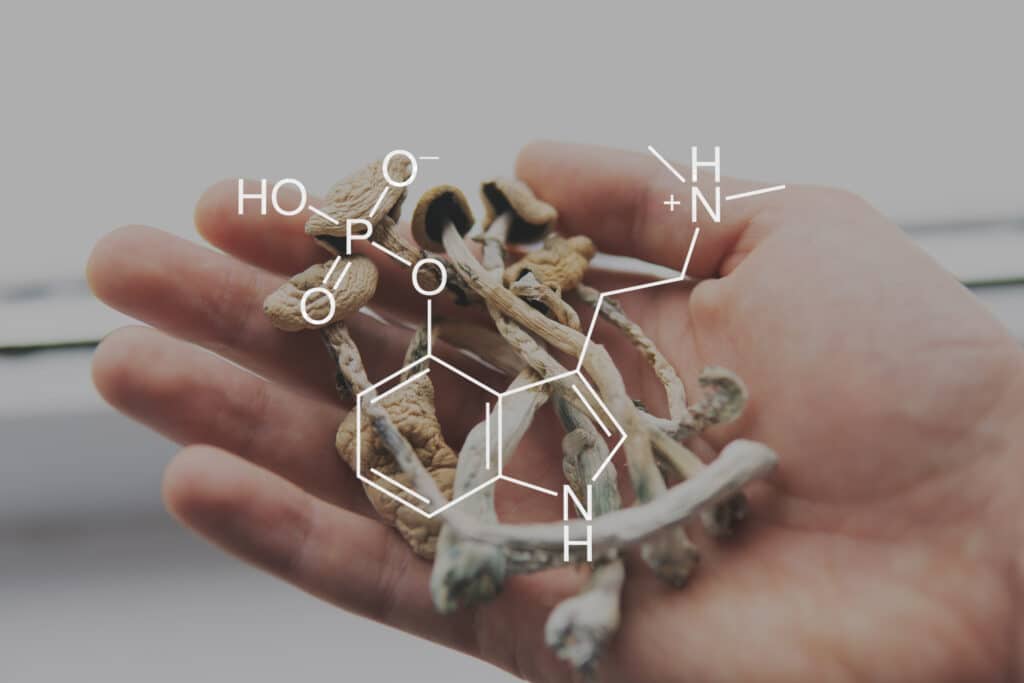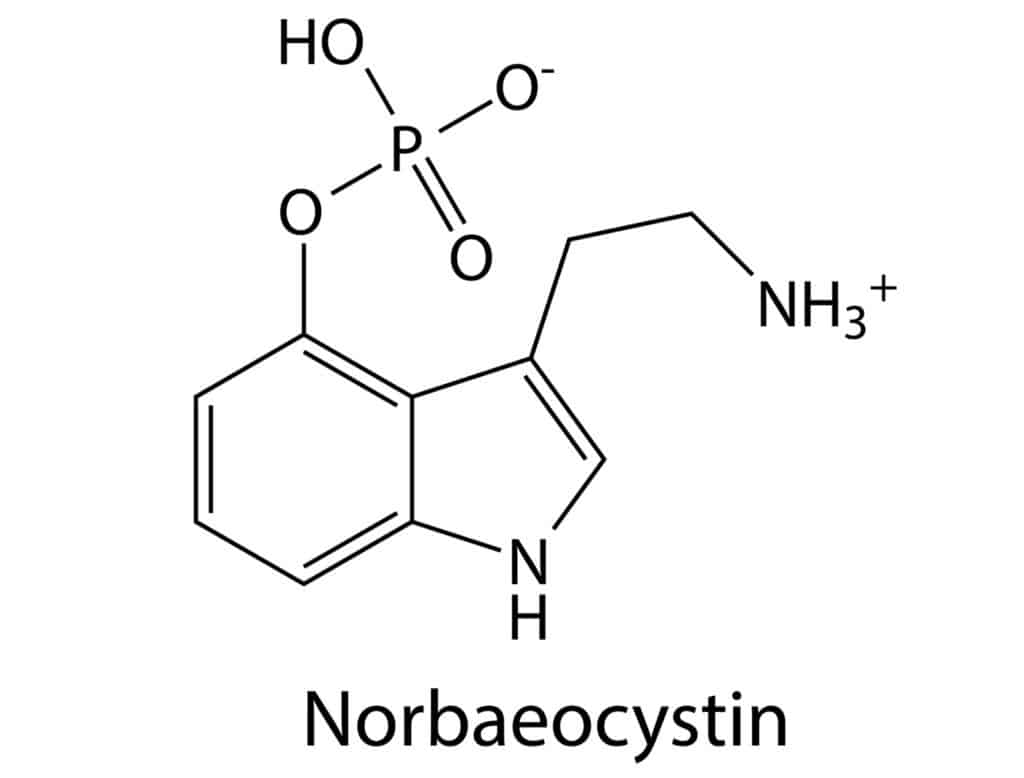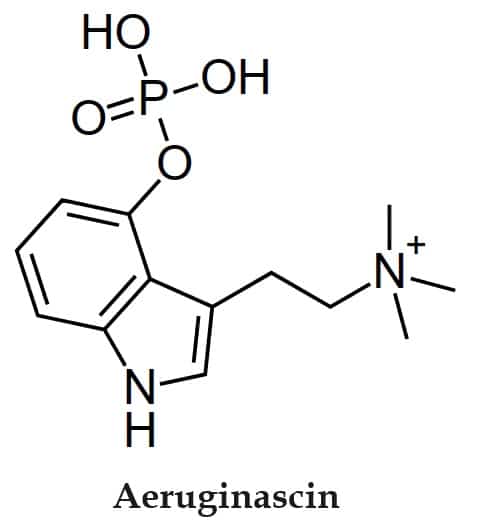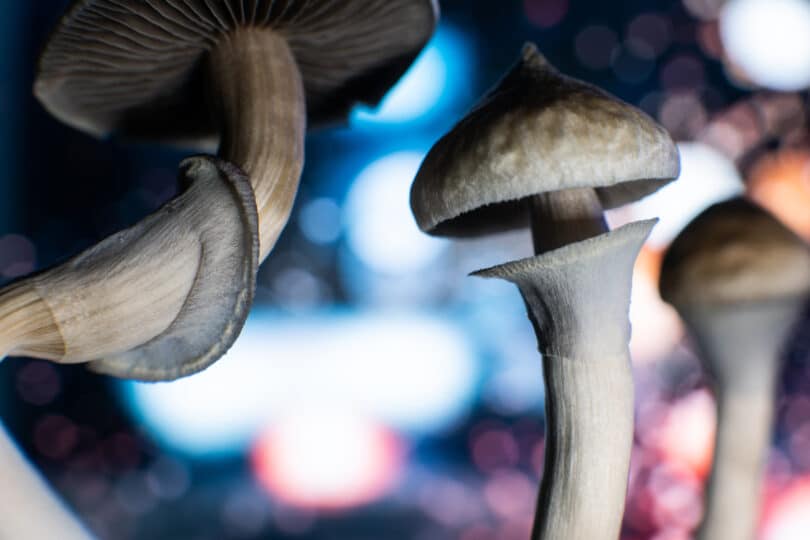The entourage effect is a familiar concept in the cannabis industry, but to quickly review, it basically emphasizes that the sum of the whole plant is greater than its individual parts. Meaning that you will benefit more from using the plant in its natural form, when all the cannabinoids, terpenes, and other chemical constituents can work together synergistically. This idea is now being applied to magic mushrooms as well.
With hallucinogenic mushrooms, just like with cannabis, the levels of psychoactive compounds (which are known as alkaloids in this case) can vary based on numerous different factors including strain type, growing conditions, harvesting and drying methods, and so on. So, let’s get better acquainted with the contributions of these lesser known, yet equally important, psychoactive alkaloids.
What are psychoactive alkaloids?
Many of the hallucinogenic compounds found in nature are of the alkaloid class. They are present in many different types of lifeforms and have been used by various cultures around the world for thousands of years, for both spiritual and medicinal purposes.
Alkaloids are a very wide family of nitrogenous organic compounds that can be found in animals, marine organisms, bacteria, plants, and fungi. Several psychedelic alkaloids have been gaining popularity in recent years, like psilocybin and DMT, but very little attention is given to the secondary alkaloids, like baeocystin and norbaeocystin, that have symbiotic relationships with primary compounds to produce the desired effects.

In some cases, these secondary alkaloids are potent enough to produce psychoactive effects on their own, when used in the right concentrations. So today, we’ll be focusing on a few of the better-known secondary alkaloids found in magic mushrooms: baeocystin, norbaeocystin, norpsilocin, and aeruginascin. Although hundreds of these compounds exist in hallucinogenic fungi, these four have the most research in their corners.
The connection between alkaloids and tryptamine
All of the aforementioned alkaloids belong to the tryptamine family. Tryptamines are organic compounds that come from tryptophan, an essential amino acid found in many plants and animals. In humans, the digestion of dietary proteins in the small intestine leads to the release of tryptophan – we do not produce it on our own. Despite this, tryptophan is vital for normal growth in infants and for the production and maintenance of the body’s proteins, muscles, enzymes, and neurotransmitters.
After tryptophan is released during digestion, it is then absorbed by the intestinal epithelium and dispersed into the bloodstream. Once it reaches the brain, tryptophan undergoes a decarboxylation process and becomes a tryptamine compound, which will then present as serotonin and melatonin. Serotonin (a neurotransmitter) is a precursor to melatonin (a hormone), and the healthier your levels of serotonin are, the more melatonin your body will produce. Together, serotonin and melatonin are responsible for regulating a vast array of our most important bodily processes.
In nature, most tryptamines are psychoactive hallucinogens. Some of the better-known ones include N,N-dimethyltryptamine (DMT), psilocybin/psilocin, ibogaine, and 5-MeO-DMT (or toad venom). Additionally, over the last few decades, a new generation of synthetic tryptamines have emerged. One of more established ones is LSD (although this is technically an ergoline-based tryptamine), and drugs like 5-MeO-DiPT, 5-MeO-DPT, AMT, 4-AcO-DMT and 4-AcODiPT DMT have been gaining some notoriety as well.
Four psychoactive mushroom alkaloids we don’t talk about enough
As stated above, there are well over a hundred alkaloids in mushrooms, but very little research has been conducted on most of them. Of the many, a few have been studied a little bit, so let’s take a closer look at the small nuggets of info we have on four of the secondary alkaloids found in magic mushrooms: baeocystin, norbaeocystin, norpsilocin, and aeruginascin.
Baeocystin
Baeocystin (C11H15N2O4P) is structurally similar to psilocybin and psilocin, and it’s believed to be one of the main compounds responsible for the effects produced by magic mushrooms. Just like psilocybin is converted to psilocin upon digestion, which a compound our system can recognize and utilize, our bodies also metabolize baeocystin into psilocin.
Researchers theorize that baeocystin produces effects very similar to psilocybin. Little concrete information exists in regard to the human pharmacology of this compound, but Jochen Gartz, author of the book Magic Mushrooms Around the World, notes a study in which “10 mg of baeocystin were found to be about as psychoactive as a similar amount of psilocybin”.
Gartz also noted his own personal experience with the compound, stating that taking 4 mg of pure beaocystin resulted in a “gentle hallucinogenic experience” for him. As we start to see an influx of legal, non-detectable magic mushroom products, it’s likely that baeocystin will be the primary compound used during the manufacturing process.
Norbaeocystin
Norbaeocystin (C10H13N2O4P) is another alkaloid found in magic mushrooms, with characteristics and effects similar to those of baeocystin. Both baeocystin and norbaeocystin are derivatives of 4-phosphoryloxytryptamine and analogs of psilocybin, although the former is considered a monomethyl analog, and the latter is a demethyl analog.

Like baeocystin, norbaeocystin was first detected and isolated in 1968, by Dr. Albert Y. Leung and Paul A.G. When it comes to norbaeocystin, there is even less information available. In 2020, researcher Dr. Alex Sherwood and his team at Usona Institute synthesized norbaeocystin from a few different types of psychedelic fungi. Another team from Miami University, led by Dr. Alexandra Adams, developed a biosynthetic method for creating this alkaloid using genetically engineered E. coli bacteria.
Researchers are unsure if norbaeocystin has any psychoactive capabilities on its own. However, they do believe it contributes to the psychedelic effects of fungi overall. For example, a master’s student from Miami University who participated in the study, Nicholas Alexander Anas, documented that “an equal dose of norbaeocystin and psilocybin in rats appeared to induce amplified effects.”
Norpsilocin
Norpsilocin (C11H14N2O) was discovered more recently, back in 2017, by Claudius Lenz and his colleagues from Knoll Institute (HKI) in Jena, Germany, also known as the Leibniz Institute for Natural Product Research and Infection Biology. Lenz’s team isolated norpsilocin from different strains of Psilocybe cubensis.
Although more research is needed to fully understand the mechanisms of how this alkaloid works, researchers believe that it’s equivalent to baeocystin when metabolized in the body. But again, the research here is both limited and contradictory. In a 2020 study from the Usona Insititute, researchers found that norpsilocin may not be capable of crossing the blood-brain barrier and likely does not have hallucinogenic effects on its own. However, when norpsilocin was used in subsequent tests that measure a compound’s effect on the 5-HT2A receptor, it was found to be more potent than psilocin. And its similarity to baeocystin when metabolized would lead one to believe that it is, in fact, psychoactive.
The general consensus on this alkaloid is that it may not pass from the blood to the brain to exert its effects, however, it’s possible that it could work through different receptors or chemical pathways. And because it’s so potent, it could possibly be used in extractions to make those federally legal, non-detect products mentioned earlier.
Aeruginascin
Aeruginascin (C13H20N2O4P) was first isolated by Jochen Gartz, a chemist and mycologist at the Institute for Biotechnology in Leipzig, Germany, in 1989. It was discovered using the Inocybe aeruginascens strain. In his paper, Gartz analyzed 23 cases of accidental ingestion of this alkaloid and noted that the effects “always resulted in euphoria”.

In 2020, Klára Gotvaldová and colleagues at University of Chemistry and Technology in the Czech Republic, were able to find traces of this alkaloid in Psilocybe cubensis strains as well. This compound is structurally similar to many other mushroom alkaloids, but what’s interesting is that is also shares strong similarities with bufotenidine also, a naturally-occurring toxin found in frog and toad skin (not the same as venom secreted from the glands of Bufo alvarius).
Aside from that, we don’t have much to go on with this compound either. But based on data from Gartz’s study, it’s safe to assume that this alkaloid could be psychoactive on its own when using the correct dose and method of consumption.
Final thoughts
It’s fun to think about how many psychoactive alkaloids really exist out there, the numbers are in the thousands, and there are dozens of them in magic mushrooms alone. Since research has been limited to a select few, it’s hard to know the true potential of these compounds, but it seems like the gateways are opening so, hopefully, we can expect to learn much more in the near future.
Welcome cannabis aficionados! Thanks for making your way to Cannadelics.com, an independent news site going deep into the worlds of cannabis, psychedelics, and well beyond. We’re big on updates, so come by regularly. And get yourself signed up to the Cannadelics Weekly Newsletter, for the best in related product offerings, as well.









